hankyoreh
Links to other country sites 다른 나라 사이트 링크
[Reportage] After ten-year struggle, Gangjeong villagers beset by government indemnity claims
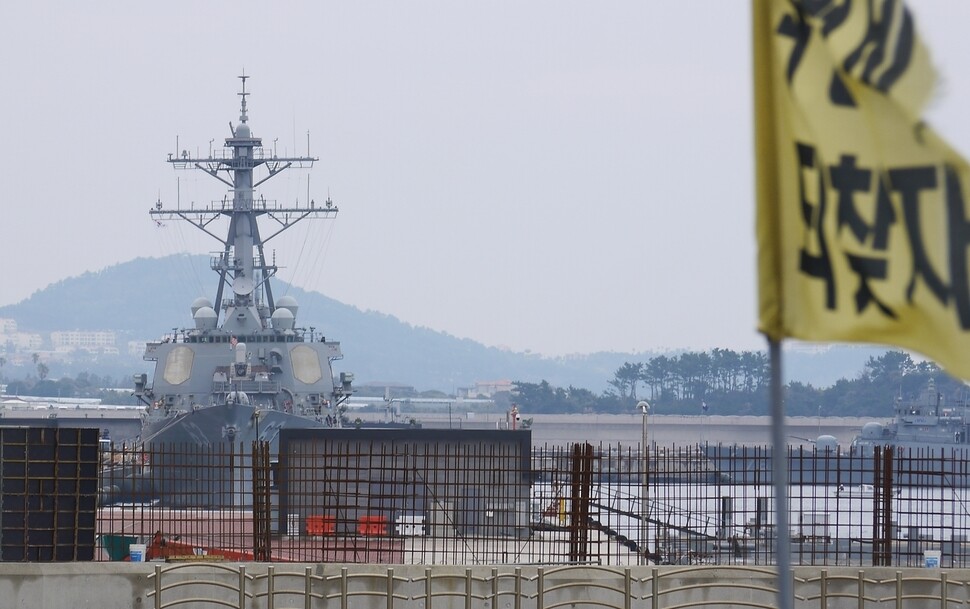
On the morning of Mar. 25, the USS Stethem, an Aegis-equipped destroyer in the US navy, slowly entered Jeju Naval Base. This was the first foreign warship to put in at the base since its completion. At the same time, a number of villagers and activists standing in front of the base chanted their opposition to the vessel’s anchoring there. At Gangjeong Harbor, the ocean breeze ruffled a faded yellow flag that said, “Adamantly opposed to the naval base” and “Give up the right to indemnity.” Around noon, the neighborhood began to bustle as villagers who had been fishing in their boats set up stalls teeming with fish in front of the Life and Peace Center like a flea market.

Around Seogwipo these days, the blooming magnolia flowers are already falling, and now the big cherry blossom trees are starting to bud. In early April, cherry blossoms will be in their full glory along the streets of Gangjeong Village. While spring has returned with its vibrant sprouts, the ocean breeze is still chilly at the village harbor, and the villagers shiver in the cold.
Over the past 10 years at Gangjeong Village, that chilly wind has ripped and torn the hearts of the villagers even after the start of spring. Apr. 26, 2007, is the day when the community of Gangjeong Village - which was established more than 450 years ago - started to break down. At an extraordinary village meeting attended by only 87 of the more than 1,900 people in the village (including 1,050 of voting age), the decision was swiftly made to build a naval base there with a single round of applause, without even debating the pros and cons.
Now it’s 10 years later. Even the people who attended that meeting never dreamed that their village would be divided like this. Gangjeong Village derived its name from an expression meaning that the high quality of Jeju’s rice and water made it the best place to live even during the poverty of the past, but the villagers were divided between those who supported the construction of the naval base and those who opposed it. The campaign against the construction of the base made criminals out of villagers who had never had to worry about the law.
Construction on the Jeju Naval Base was completed on Feb. 26, 2016. It didn’t appear that there would be any more major confrontations. It was assumed that the wounds and the conflict would be resolved with time. But now the people who went back to their jobs in the tangerine orchards, on the ocean and on construction sites, determined to go back to their normal lives, have received notice that the navy blames them for delaying the construction and has filed a lawsuit demanding that they pay a large amount of money in indemnity.
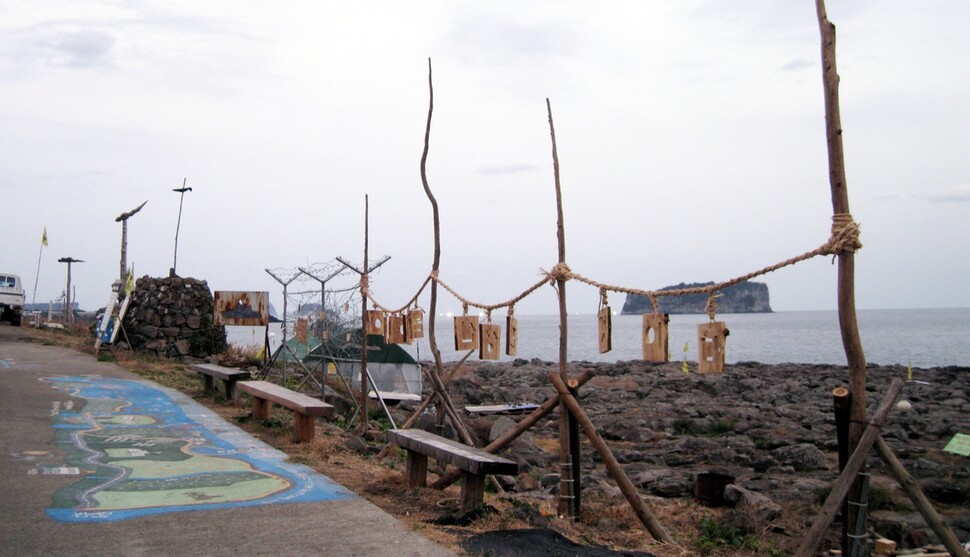
10 years of pain: Gangjeong villagers can’t sleep at night
“My husband is suffering from insomnia and can’t get to sleep. He’s just worried about what will happen if the court puts a provisional attachment on him. We’ve undergone psychological and physical suffering during our 10-year struggle, but what if our assets suffer as well?” said Jeong Yeong-hee, 68, with obvious concern in her voice. Jeong is in group B, and her husband, Kang Seong-won, 86, is in group A. The navy has arbitrarily categorized villagers into four groups - A through D - according to their “degree of complicity” in the opposition to the naval base, and it has used these categories in its claim for indemnity.
“They seem to be doing this because of something that happened six or seven years ago, but my husband was 80 years old at the time. What could an old man like that have done? The only crimes he committed were giving people on their way to the Peace Center a place to rest and attending press conferences,” Jeong protested.
The day the decision was made to approve the construction of the naval base was “the first time I ever attended a village meeting,” said Moon Sang-cheol, 55, from whom about 6,000 square meters of land was expropriated for the naval base. “They say the applause was unanimous, but that’s not the case. A few of the villagers went outside and didn’t clap,” Moon said.
While Moon (who was fined three times during the early phase of the opposition to the naval base) is not among those being sued for damages, he is still furious that the navy has filed a lawsuit. “Demanding indemnity is like toying with the villagers who opposed the base. It‘s keeping them from breathing. This conflict won’t be resolved until the government gives up its right to indemnity,” he said.
“I want to ask how we harmed the promotion of state policy. Our only crime is fighting for 10 years to hand down a beautiful village to our children. Why should we have to pay indemnity as well?” asked Kang Dong-gyun, former head of the Gangjeong Village Association and one of the leaders of the opposition to the base, with anger in his voice.
“The past 10 years have been a painful time for the villagers. I thought these things would be resolved with time, but now the navy is pressuring the villagers with the right of indemnity,” said Jo Gyeong-cheol, current head of the Gangjeong Village Association.
The lawsuit demanding indemnity is sparking conflict among the villagers who opposed the construction of the base. “Villagers who aren‘t named in the lawsuit can’t go to the strategy meetings because they feel awkward about attending. People get hurt when people who are named in the lawsuit carelessly say ‘that’s because you‘re not being sued.’ The government and the navy are even inciting conflict between the villagers who are opposed to the base,” one villager said.
“We struggled together, and we would gather together to raise our voices. But some of the people who aren‘t named in the lawsuit are treating this as if it’s none of their business. So that sometimes makes me feel upset,” said one villager who is being sued for indemnity.
“It’s unbelievable. Conflict is forming even among the villagers because of the indemnity lawsuit. I’m also concerned that there’s going to be conflict because few people care aside from the villagers who are being sued,” said Yoon Sang-hyo, without getting into the details. Yoon, 80, is included in B group of the lawsuit.
This demand for indemnity won’t be the end. In July 2016, Daelim Construction, which was responsible for the second harbor construction zone, filed a request for mediation of its losses with the Korean Commercial Arbitration Board, and the results are expected in June. Samsung C&T was awarded 27.3 billion won (US$24.43 million) in the first round of arbitration, and it is currently moving forward with a second round of arbitration, in which it is requesting 13 billion won (US$11.6 million). While the villagers are already as exhausted as they can be in both body and soul because of their 10-year struggle, the outcome of these two ongoing arbitration cases could result in additional indemnity claims being filed against them.
“Over the past 10 years, the village community has been destroyed, and we have suffered wounds that cannot be erased. But as if that wasn‘t enough, now they’re trying to shift the blame for the delay of the construction of the base. Demanding indemnity from us is once again destroying the village community, which has been shattered into pieces,” villagers said. The people of Gangjeong Village can’t get any sleep. Is there no way to go back to the village as it was 10 years ago and bring smiles back to villagers’ faces?
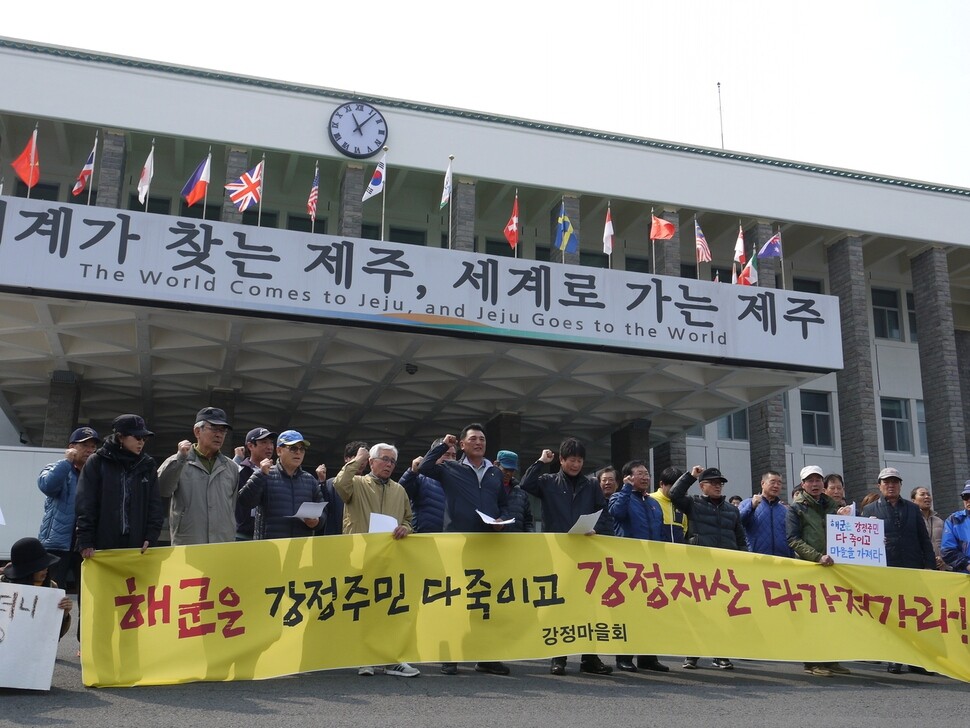
The reason for the indemnity demands
When construction was completed on the base in Feb. 2016, then-president Park Geun-hye sent a congratulatory message expressing her “hope that this would be a significant opportunity for overcoming past conflict and achieving harmony and coexistence with the local community.” But during the subsequent year, her remarks about “overcoming conflict” and “harmony and coexistence” proved to be empty rhetoric.
“A demand for indemnity is a procedure designed to compensate for damages incurred by the illegal action of interfering with construction. Thus far, we have no plan to retract these demands,” said a source at the naval headquarters during a briefing about pending issues held at the Jeju Naval Base on Mar. 9, the first anniversary of the base‘s completion.
On Mar. 28, 2016, the South Korean navy filed a lawsuit at the Seoul Central District Court for compensation against villagers, activists and organizations that participated in the campaign against the base, arguing that they had delayed its construction. The damages they requested from 116 individuals (including 38 villagers) and five organizations (including the Gangjeong Village Association) amounted to 3.45 billion won. In its lawsuit, the navy divided the defendants into groups A through D, claiming that during the period when construction was delayed (from Jan. 2011 to Feb. 2012), they entered and occupied the construction site without permission, prevented the entrance of construction vehicles by blockading the entrance to the site and approached from the ocean to interfere with vessels doing work there. The 26 individuals and five organizations in A group are being asked to pay 3.15 billion won, the 32 individuals in B group to pay 200 million won (US$179,000), the 32 individuals in C group to pay 90 million won (US$80,550) and the 26 individuals in D group to pay 10 million won (US$8,950).
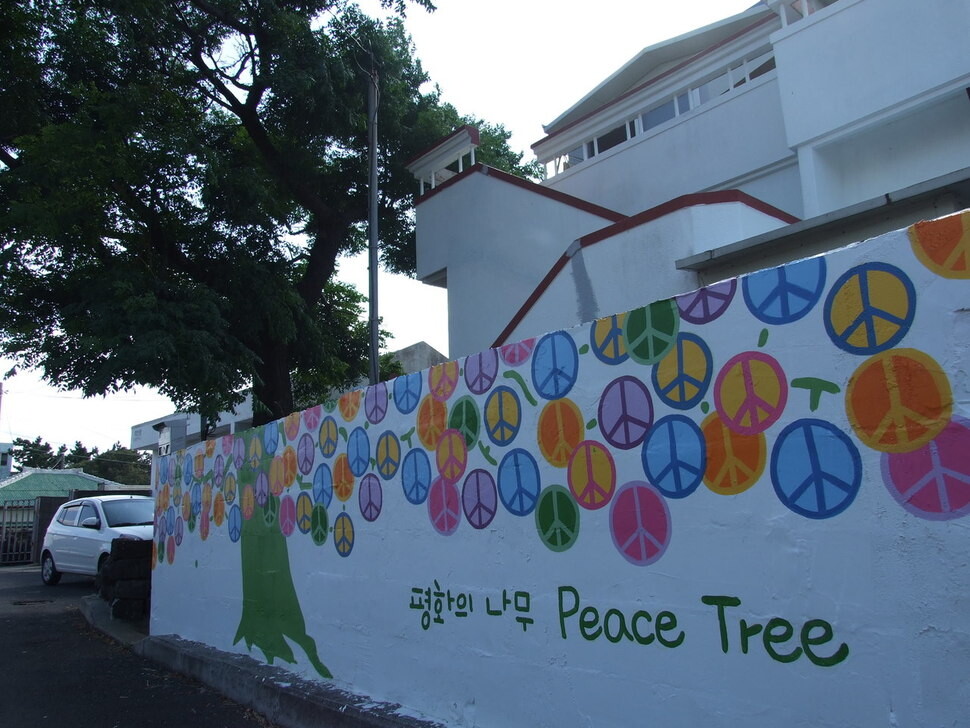
The indemnity claim goes back to when Samsung C&T, which was in charge of the first harbor construction zone at the naval base, asked the navy to pay 36 billion won in losses resulting from the delay of construction in Nov. 2012. Following a decision by the Korean Commercial Arbitration Board, the navy paid Samsung C&T 27.3 billion won (including interest) in Aug. 2015. The navy has claimed 3.45 billion won of this amount in indemnity from villagers, activists and groups, since their “illegal activity,” the navy argues, caused the construction to be delayed.
“In government projects that have taken place in other areas, such as the construction of the tunnel at Cheonseong Mountain, no request has been made for indemnity because the builder has not asked for compensation for losses. The lawsuit demanding indemnity at the Jeju Naval Base is a legal measure taken in line with the builders’ request for compensation for losses incurred. The military has no choice but to follow legal procedures,” a source with the naval headquarters said in a telephone interview with the Hankyoreh on Mar. 23.
In its lawsuit, the navy did not specify the actions of villagers, activists and the village association. Villagers argue that some people who did not even go to the main entrance to the naval base are on the list of defendants. Some even think this will set a precedent for the government using lawsuits to suppress or completely silence people who oppose government projects. “If the indemnity claim at Gangjeong Village becomes legal precedent, the government or corporations could unilaterally file damage lawsuits against uncooperative people,” said Koh Kwon-il, vice president of the Gangjeong Village Association.
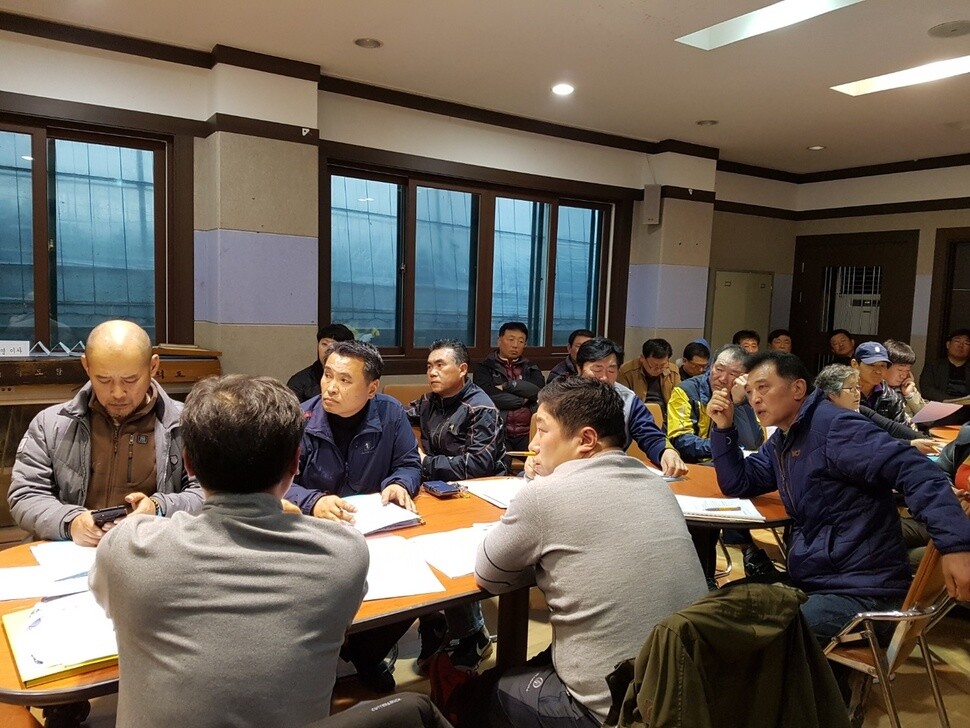
Wounds fester among the punished villagers
“Requesting compensation is what you do when private rights have been infringed upon; criminal punishment is sufficient when public interests have been infringed upon. The villagers have already received their punishment,” said Baek Shin-ok, a lawyer with MINBYUN Lawyers for a Democratic Society. Over the past 10 years, more than 700 people have been arrested, 480 cases have gone to court, and 206 villagers and activists have been involved in those cases. Fines that have been paid by individuals or the village association have also exceeded 380 million won. The fines were so severe that there was even talk of selling the Gangjeong Village Center last year, though that didn’t end up happening.
“Even if construction on a government project doesn’t move forward or costs more than planned because the government failed to seek residents’ consent and cooperation for the project, that means the government caused it, right? Voicing objections to the injustice of undemocratic and rushed projects is both the right and duty of citizens,” said Kang Ho-jin, president of the Jeju Islanders Self Government Coalition.
“The government might as well be manhandling sick patients who are in the hospital. The conflict can’t be resolved until this problem has been dealt with,” said Jo Gyeong-cheol, head of the Gangjeong Village Association.
“All the villagers were opposed to the government project, but they pushed it through unilaterally while disregarding reasonable procedures. The people of Gangjeong Village were enraged and opposed the base because the government and the navy disrespected them and trampled on them.”
Not only weary and wounded from the past 10 years, but also branded as lawbreakers and forced to pay fines and even compensation for damages, the people of Gangjeong Village have a question to ask: is this a country?
By Huh Ho-joon, Jeju correspondent
Please direct questions or comments to [english@hani.co.kr]

Editorial・opinion
![[Column] Park Geun-hye déjà vu in Yoon Suk-yeol [Column] Park Geun-hye déjà vu in Yoon Suk-yeol](https://flexible.img.hani.co.kr/flexible/normal/500/300/imgdb/original/2024/0424/651713945113788.jpg) [Column] Park Geun-hye déjà vu in Yoon Suk-yeol
[Column] Park Geun-hye déjà vu in Yoon Suk-yeol![[Editorial] New weight of N. Korea’s nuclear threats makes dialogue all the more urgent [Editorial] New weight of N. Korea’s nuclear threats makes dialogue all the more urgent](https://flexible.img.hani.co.kr/flexible/normal/500/300/imgdb/original/2024/0424/7317139454662664.jpg) [Editorial] New weight of N. Korea’s nuclear threats makes dialogue all the more urgent
[Editorial] New weight of N. Korea’s nuclear threats makes dialogue all the more urgent- [Guest essay] The real reason Korea’s new right wants to dub Rhee a founding father
- [Column] ‘Choson’: Is it time we start referring to N. Korea in its own terms?
- [Editorial] Japan’s rewriting of history with Korea has gone too far
- [Column] The president’s questionable capacity for dialogue
- [Column] Are chaebol firms just pizza pies for families to divvy up as they please?
- [Column] Has Korea, too, crossed the Rubicon on China?
- [Correspondent’s column] In Japan’s alliance with US, echoes of its past alliances with UK
- [Editorial] Does Yoon think the Korean public is wrong?
Most viewed articles
- 1‘We must say no’: Seoul defense chief on Korean, USFK involvement in hypothetical Taiwan crisis
- 2[Reportage] On US campuses, student risk arrest as they call for divestment from Israel
- 3[Column] Park Geun-hye déjà vu in Yoon Suk-yeol
- 4‘Weddingflation’ breaks the bank for Korean couples-to-be
- 5Korea sees more deaths than births for 52nd consecutive month in February
- 6N. Korean delegation’s trip to Iran shows how Pyongyang is leveraging ties with Moscow
- 7Amnesty notes ‘erosion’ of freedom of expression in Korea in annual human rights report
- 8Will NewJeans end up collateral damage in internal feud at K-pop juggernaut Hybe?
- 9N. Korean hackers breached 10 defense contractors in South for months, police say
- 10[Guest essay] The real reason Korea’s new right wants to dub Rhee a founding father